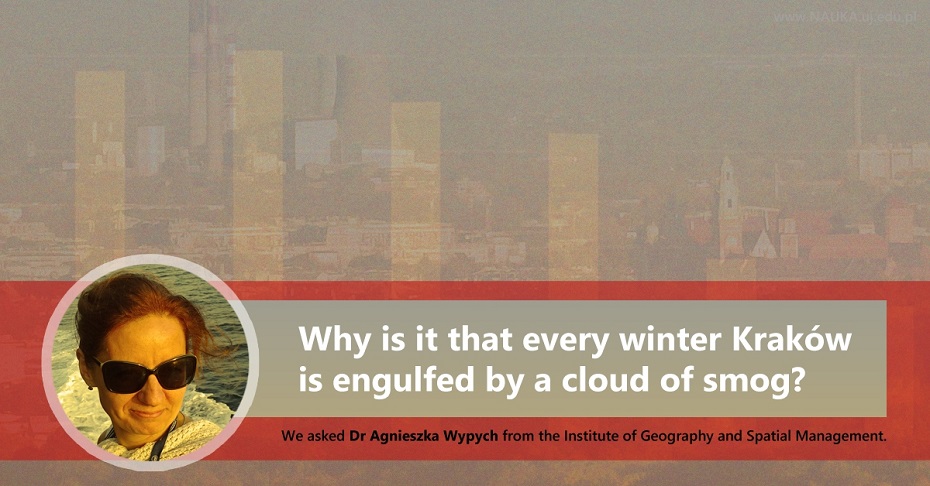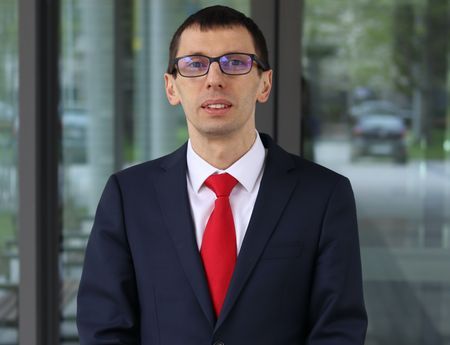
Kraków is engaged in a constant battle with smog. Some of the reasons for this include weather conditions and local topography. But it’s not all. Why is it that every winter Kraków is engulfed by a cloud of smog? We asked Dr Agnieszka Wypych from the Institute of Geography and Spatial Management.
In autumn, the inhabitants of Kraków can usually observe a gradual deterioration of weather. Air temperature drops and humidity rises, which makes us more sensitive to cold. It is then that most people as well as thermal-electric power plants begin the heating season.
Cities emit a lot of suspended particulates into the atmosphere, including pollutants such as PM10, PM2.5 and benzo[a]pyrene, which has carcinogenic properties. This is caused both by heating and traffic. It’s these substances that are decreasing the quality of air in Kraków. However, it’s worth to bear in mind that the aerosanitary conditions have improved significantly when compared to the past decades – for instance, the ambient concentration of PM10 pollutant has dropped by about 70% in the last 50 years.
There’s more smog when it’s colder
 Unfortunately, the colder part of the year is a period when the air pollution standards are greatly exceeded. Apart from the emissions caused by cars and heating, two other major factors in this are weather and the fact that Kraków is located in the Vistula River valley.
Unfortunately, the colder part of the year is a period when the air pollution standards are greatly exceeded. Apart from the emissions caused by cars and heating, two other major factors in this are weather and the fact that Kraków is located in the Vistula River valley.
Weather has a significant influence on the level of pollutants in the air. Temperature inversion means that the further from the ground, the higher the temperature is, which leads to creation of a ‘cap’ over a city, trapping the smog inside by blocking vertical air movement. Inversion is often caused by the presence of a high pressure centre accompanied by a low-speed wind (or even the absence of it), which makes it even more difficult to disperse the pollution.
Kraków ‘trapped’ in a valley
Smog is formed when we take the factors mentioned above – windless weather and air pollution – and then we add fog into the mix. In Kraków, this happens between October and January (30% of days in a year on average).
The impact of weather conditions on the levels of smog in Kraków is only strengthened by its location. There are highlands to the north of the city, and mountains to the south, which means that, on average, Kraków lies about 200–250 metres lower than the hills surrounding it. These hills form ‘orographic barriers’ which makes it more difficult for fresh air to flow into the city. The high number of rivers in the valley increases humidity and facilitates the formation of fog.
Therefore, although the local government has been fighting against smog for years by introducing various policies, Kraków will probably always have some difficulty in maintaining a good quality of air. In autumn, as much as 70% of the days are characterised by weather conditions unfavourable for reducing pollution (in comparison, the percentage is 30% for winter and 60% for spring). It’s no wonder that smog is particularly prevalent in this period of time.
We should, however, strive to reduce our impact on the environment, as it will greatly reduce the level of pollution in the atmosphere.
Original text: www.nauka.uj.edu.pl





